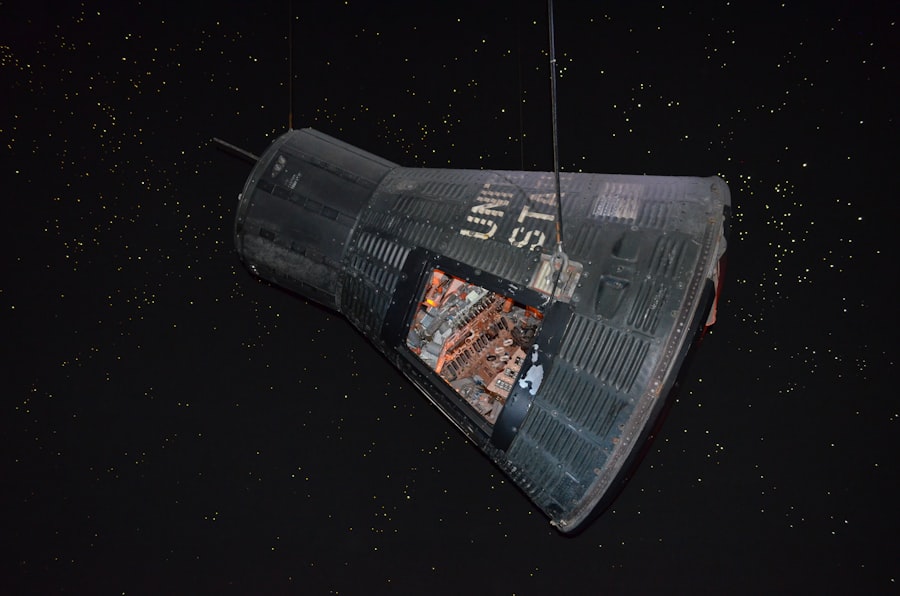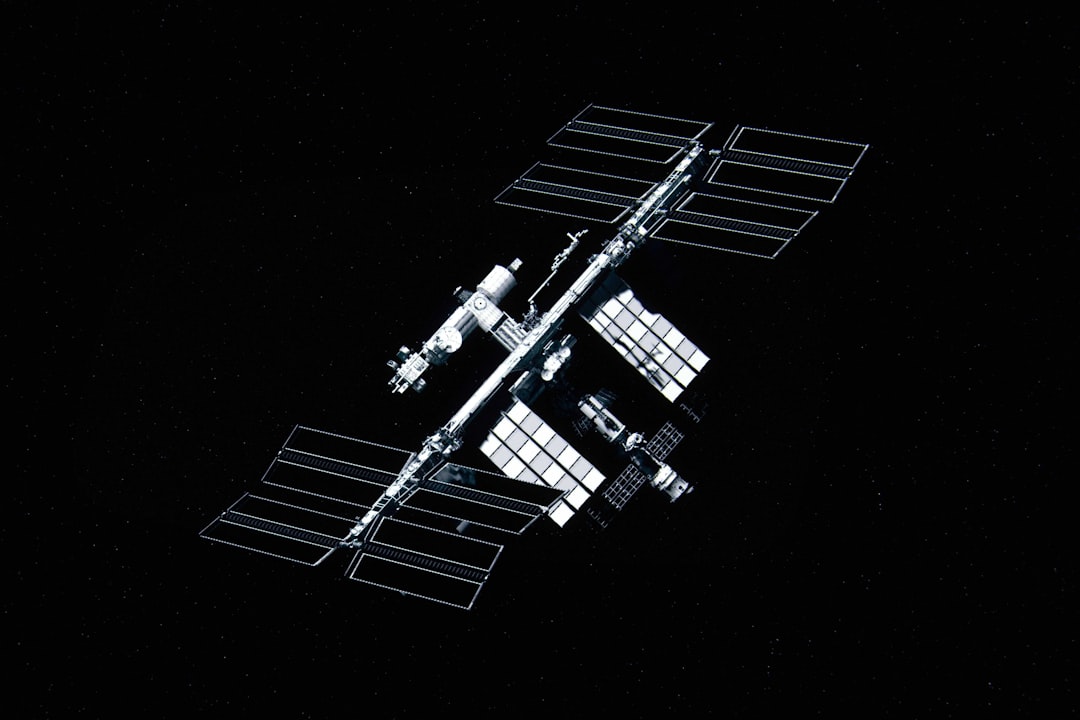Starlink satellites represent a groundbreaking initiative in the realm of global internet connectivity, spearheaded by SpaceX, the aerospace manufacturer and space transport services company founded by Elon Musk. Launched with the ambitious goal of providing high-speed internet access to underserved and remote areas around the globe, Starlink has quickly garnered attention for its innovative approach to satellite technology. The constellation of satellites, which orbits the Earth at low altitudes, is designed to deliver broadband services that can rival traditional terrestrial internet providers.
This initiative not only aims to bridge the digital divide but also seeks to enhance connectivity in regions where conventional infrastructure is lacking or non-existent. The concept of Starlink is rooted in the idea of creating a network of thousands of small satellites that work in unison to provide seamless internet coverage. By utilizing low Earth orbit (LEO) technology, these satellites can reduce latency and improve connection speeds compared to traditional geostationary satellites.
As the world becomes increasingly reliant on digital communication, the importance of such a network cannot be overstated. Starlink’s potential to transform how people access information and communicate is a testament to the advancements in satellite technology and the vision of its creators.
Key Takeaways
- Starlink satellites are part of a project by SpaceX to provide global internet coverage.
- The launch and deployment of Starlink satellites involves sending batches of 60 satellites into orbit at a time.
- The purpose of Starlink satellites is to provide high-speed, low-latency internet access to underserved and remote areas.
- An unexpected setback in 2025 resulted in the loss of a significant number of Starlink satellites in space.
- Efforts are underway to recover the lost satellites and lessons are being learned from the setback to inform future plans for deployment.
The Launch and Deployment of Starlink Satellites
The journey of Starlink began with its first batch of satellites launched in May 2019. This initial deployment marked a significant milestone for SpaceX, as it was the first step toward realizing Musk’s vision of a global satellite internet network. Since then, SpaceX has conducted numerous launches, deploying thousands of satellites into orbit.
Each launch typically involves a Falcon 9 rocket carrying multiple satellites, which are then released into their designated orbits. The rapid pace of these launches has been a hallmark of SpaceX’s operational strategy, showcasing their ability to innovate and execute complex missions efficiently. As the constellation grew, so did the challenges associated with managing such a vast network.
The deployment process required meticulous planning and coordination to ensure that each satellite was positioned correctly and could communicate effectively with ground stations and user terminals. SpaceX employed advanced technologies, including autonomous satellite navigation systems, to facilitate this process. The company’s commitment to continuous improvement has allowed it to refine its launch techniques and enhance the overall performance of the Starlink network.
The Purpose and Function of Starlink Satellites

The primary purpose of Starlink satellites is to provide high-speed internet access to users around the world, particularly in areas where traditional internet service is unreliable or unavailable. By leveraging a constellation of satellites in low Earth orbit, Starlink aims to deliver broadband services that can support various applications, from streaming video content to enabling remote work and education. This capability is especially crucial in rural and underserved regions, where infrastructure investments have historically lagged behind urban areas.
In addition to enhancing internet access, Starlink satellites also serve a broader function in promoting global connectivity. The network is designed to support a wide range of devices, including smartphones, laptops, and IoT (Internet of Things) devices. This versatility allows users to stay connected regardless of their location, fostering greater communication and collaboration across borders.
As more people gain access to reliable internet services, the potential for economic growth and social development increases, making Starlink an essential player in the quest for global connectivity.
The Unexpected Setback in 2025
| Year | Event | Impact |
|---|---|---|
| 2025 | The Unexpected Setback | Significant decrease in revenue and market share |
| 2025 | Customer Satisfaction | Decreased due to the setback |
| 2025 | Employee Morale | Impacted negatively |
In 2025, Starlink faced an unexpected setback that sent shockwaves through the tech community and raised concerns about the future of its satellite network. A significant number of satellites were lost due to an unforeseen technical failure during a routine operational update. This incident not only disrupted service for many users but also posed challenges for SpaceX in terms of maintaining the integrity and functionality of the remaining satellites in orbit.
The loss highlighted vulnerabilities within the system that had previously gone unnoticed, prompting urgent discussions about risk management and contingency planning. The ramifications of this setback were felt across various sectors that relied on Starlink for connectivity. Businesses that depended on stable internet access faced disruptions, while educational institutions struggled to maintain online learning environments for students in remote areas.
The incident served as a stark reminder of the complexities involved in managing a large-scale satellite network and underscored the importance of robust systems for monitoring and addressing potential failures.
The Impact of Losing Starlink Satellites in Space
The loss of several Starlink satellites had immediate and far-reaching consequences for users around the globe. For many individuals and businesses that relied on the service for their daily operations, the disruption meant a sudden loss of connectivity that could not be easily remedied. In rural areas where alternative internet options were limited or nonexistent, this setback was particularly detrimental.
Users experienced slower speeds, increased latency, and even complete outages, which hindered their ability to communicate effectively or access essential online resources. Moreover, the incident raised concerns about the long-term sustainability of the Starlink project. With thousands of satellites planned for deployment, questions arose regarding how such losses would affect overall network performance and reliability.
The situation prompted discussions about redundancy measures and strategies for ensuring that future deployments would be more resilient against similar failures.
Efforts to Recover the Lost Satellites

In response to the unexpected setback in 2025, SpaceX initiated a series of recovery efforts aimed at mitigating the impact of the lost satellites. The company mobilized its engineering teams to analyze the root causes of the failure and develop solutions to prevent similar incidents in the future. This involved conducting thorough investigations into the technical aspects of satellite operations and implementing software updates designed to enhance system stability.
Additionally, SpaceX accelerated its plans for future satellite launches to replenish the lost capacity within the network. By prioritizing these missions, the company aimed to restore service levels as quickly as possible while also reinforcing its commitment to providing reliable internet access. The recovery efforts underscored SpaceX’s resilience and adaptability in navigating challenges within a rapidly evolving technological landscape.
Lessons Learned from the Setback
The setback experienced by Starlink in 2025 served as a critical learning opportunity for SpaceX and the broader satellite industry. One key lesson was the importance of robust risk management practices when operating complex systems like satellite constellations. The incident highlighted the need for comprehensive testing protocols and contingency plans that could be activated in response to unforeseen challenges.
Furthermore, the situation emphasized the value of transparent communication with users during times of crisis. As stakeholders grappled with service disruptions, clear updates from SpaceX regarding recovery efforts and timelines were essential in maintaining user trust and confidence in the network. By openly addressing concerns and providing regular progress reports, SpaceX could foster a sense of partnership with its users as they navigated this challenging period together.
Future Plans for Starlink Satellite Deployment
Looking ahead, SpaceX remains committed to expanding its Starlink satellite constellation despite the challenges faced in 2025. The company has outlined ambitious plans for future deployments that aim to enhance coverage and improve service quality for users worldwide. These plans include launching additional batches of satellites equipped with advanced technologies designed to increase bandwidth capacity and reduce latency further.
Moreover, SpaceX is exploring partnerships with governments and organizations around the world to extend Starlink’s reach into new markets. By collaborating with local entities, SpaceX hopes to tailor its services to meet specific regional needs while also addressing regulatory considerations that may arise during deployment. This proactive approach positions Starlink as a leader in global connectivity solutions as it continues to evolve and adapt to changing demands.
The Role of Starlink Satellites in Global Connectivity
Starlink satellites play a pivotal role in shaping the future of global connectivity by providing reliable internet access to individuals and communities that have historically been underserved by traditional providers. As digital communication becomes increasingly integral to daily life, bridging the digital divide is more important than ever. Starlink’s ability to deliver high-speed internet services across vast geographical areas empowers users with opportunities for education, economic development, and social engagement.
In addition to enhancing individual connectivity, Starlink has implications for industries such as telemedicine, remote work, and disaster response efforts. By enabling seamless communication in remote locations or during emergencies, Starlink can facilitate timely access to critical resources and information. As more people gain access to reliable internet services through this innovative satellite network, the potential for positive societal change grows exponentially.
Potential Risks and Challenges of Satellite Deployment
Despite its promise, satellite deployment comes with inherent risks and challenges that must be carefully managed. One significant concern is space debris; as more satellites are launched into orbit, the risk of collisions increases. This not only poses threats to operational satellites but also raises questions about long-term sustainability in space exploration efforts.
Additionally, regulatory hurdles can complicate deployment plans as countries navigate issues related to spectrum allocation and orbital slots. Ensuring compliance with international regulations while expanding coverage can be a complex process requiring collaboration among various stakeholders. Addressing these challenges will be crucial for maintaining momentum in satellite deployment initiatives like Starlink.
Conclusion and Outlook for Starlink Satellite Technology
In conclusion, Starlink satellites represent a transformative force in global connectivity efforts, offering unprecedented opportunities for individuals and communities worldwide. Despite facing setbacks such as those encountered in 2025, SpaceX’s commitment to innovation and resilience positions it well for future success. As plans for expanded deployments unfold, stakeholders can anticipate continued advancements in satellite technology that will further enhance service quality and accessibility.
Looking ahead, the outlook for Starlink satellite technology remains optimistic as it continues to evolve alongside emerging trends in digital communication. By addressing challenges related to space debris management and regulatory compliance while prioritizing user trust through transparent communication strategies, SpaceX can solidify its role as a leader in shaping the future of global connectivity solutions. Ultimately, as more people gain access to reliable internet services through initiatives like Starlink, society stands poised for significant advancements across various sectors driven by enhanced communication capabilities.
In a recent development concerning the Starlink satellite network, it has been reported that a significant number of satellites are expected to be lost by 2025 due to various factors such as space debris and atmospheric drag. This situation highlights the growing challenges faced by satellite operators in maintaining their constellations. For more insights into the implications of such losses and the future of satellite technology, you can read a related article on the topic by visiting
